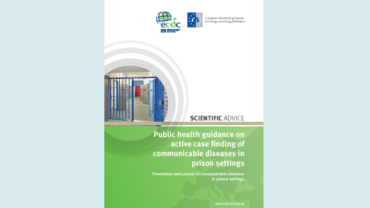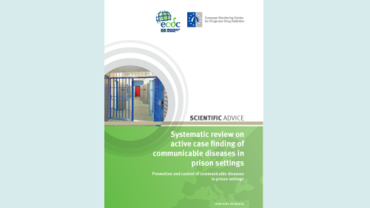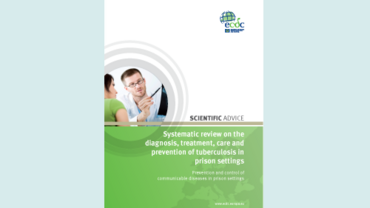Preventing blood-borne viruses in prison settings: ECDC and EMCDDA Guidance
People in prison experience a higher burden of communicable diseases such as hepatitis B (HBV), hepatitis C (HCV) and HIV often linked to a history of injecting drug use. In addition, incarceration can result in a higher risk of transmission of communicable diseases, due to factors such as overcrowding, poor healthcare facilities and delayed diagnosis. In their joint public health guidance published today at AIDS 2018, ECDC and the European Monitoring Centre for Drugs and Drug Addiction (EMCDDA) outline evidence-based and effective measures to help prevent and control the transmission of blood-borne viruses in prison settings.
In the 31 countries of the European Union and European Economic Area, more than half a million people are held in a custodial facility on any given day. Incarceration represents an opportunity to address the healthcare needs of those people in prison who belong to hard-to-reach groups in the community, such as people who inject drugs.
Delivering health protection, prevention and harm reduction programmes in prisons will not only benefit the prison population but, by targeting ‘high transmission’ networks, can also reduce the future risk of transmission in the community.
’The prevention and control of blood borne viruses among this particularly vulnerable population are important to improve their health and to stop the on-going transmission of viral hepatitis or HIV.
Our joint guidance provides a valuable resource for planners and providers of healthcare in prisons to help them to address this specific public health issue’, says ECDC Director Andrea Ammon.
The guidance is presented today at the 22nd International AIDS Conference (AIDS 2018) in Amsterdam and ahead of World Hepatitis Day on 28 July.
‘Providing high-quality health services in prison settings is effective because it helps us reach groups that are medically under-served in the community, including people who use drugs. Our new joint guidance highlights how achieving good prison health can contribute to improving public health and bring benefits for the wider community, such as reducing the transmission of drug-related infectious diseases’, adds EMCDDA Director Alexis Goosdeel.
The ECDC–EMCDDA Guidance is based on a series of comprehensive reviews and analyses of the published literature and consultation with a scientific expert panel. It identifies the most (cost-) effective approaches with the aim to interrupt transmission in, and between, prison settings as well as the community.
With this new guidance, the agencies continue their joint efforts to promote evidence-based practices in the field of prevention and care of communicable infectious diseases, to tackle in particular the high levels of transmission of blood-borne viruses among people who use drugs.
Published alongside today’s ECDC–EMCDDA public health guidance are the underlying systematic review and a ’Guidance in brief’, providing a summary of selected findings.
The key conclusions of the guidance regarding main actions for effective prevention and control of blood-borne viruses (BBV) in prison settings are:
Prevention
Offer a comprehensive package of preventive measures to people in prison that meet the same national standards as those recommended for community settings.
- Evidence shows that also in prison settings, condoms and behavioural interventions promote safer sex.
- Evidence shows that opioid substitution treatment reduces illicit opioid use and risks related to equipment sharing and, when continued on release, provides protection from death caused by overdose.
- Evidence shows that the provision of clean drug injection equipment is possible in prison settings and can successfully contribute to a comprehensive programme to reduce BBV transmission.
HBV vaccination
Offer HBV vaccination to people in prison with unknown or negative serology.
- Evidence shows that using rapid schedules may result in a higher completion rate of the full schedule.
Testing for viral hepatitis and HIV
Actively offer BBV testing to all people in prison upon admission and throughout the time in prison.
- Evidence shows that pro-active provision of BBV testing leads to a higher uptake; health promotion and peer education have been shown to increase HIV testing uptake.
Viral hepatitis and HIV treatment
Offer appropriate treatment to individuals diagnosed with HIV, HBV or HCV infection in prison settings, in line with the guidelines applied in the community and meeting the same provision standards as in the community.
- Evidence shows that treatment of BBV infections is feasible and effective in prison.
Continuity of care
Actively support and ensure continuity of care between prison and community.
- Evidence shows that release from prison is a key barrier to continuity and adherence to drug and infectious diseases treatment.
- Evidence shows that collaboration and partnership between prison and community health-care services promote and facilitate uninterrupted care.
- Evidence shows that active referral to external services improves treatment adherence.









